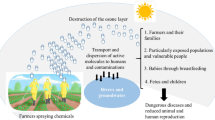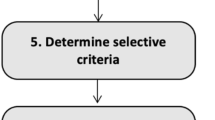Abstract
An integrated pest management strategy was implemented to cope with the invasion of Hoplochelus marginalis in Réunion in 1981. The strategy, which replaced chemical management using a pesticide (chlorpyrifos), consisted in designing and adopting a biocontrol strategy based on the entomopathogenic fungus Beauveria, developed in collaboration with growers, millers, local organizations (research, development, administration), and society. The question was to evaluate how to adopt such a strategy which could affect the socio-environmental context 30 years later. ImpresS (Impact of Research in the South) was the methodology used to identify and collect the data. The description of the innovation process began with a review of the literature and was then improved using personal and group interviews with growers, local organizations, and other stakeholders. Seventy interviews were conducted with growers and stakeholders. The results showed immediate positive economic impacts for growers, the local sugar sector and the companies distributing the innovation’s two commercial products, namely Betel® and sporised rice. Another impact was environmental, with a constant reduction in water pollution by the insecticide as there was no more insecticide applied on sugarcane. Among the indirect impacts, using a successful biological technique promoted the quality of the sugar sold on the international market. Other impacts were seen at international level, such as the renewal of European Union subsidies. This retrospective review represents a model for other sugar-producing countries to assist in analysing and understanding the adoption a successful strategy.




Similar content being viewed by others
References
Douthwaite, Boru, Thomas Kuby, Elske van de Fliert, and Steffen Schulz. 2003. Impact pathway evaluation: an approach for achieving and attributing impact in complex systems. Agricultural Systems 78: 243–265.
Godin, Benoît. 2006. The linear model of innovation—the historical construction of an analytical framework. Science, Technology and Human Values 31: 639–667.
Goble, Tarryn, Laurent Costet, Isabelle Robène, R. Samuel Nibouche, Stuart Rutherford, Des Conlong, and Martin P. Hill. 2012. Beauveria brongniartii on white grubs attacking sugarcane in South Africa. Journal of Invertebrate Pathology 111: 225–236.
ImpresS. 2016. Impact of research in the South. http://impress-impact-recherche.cirad.fr/. Accessed 15 Feb 2016.
Penfield, Teresa, Matthew J. Baker, Rosa Scoble, and Michael C. Wykes. 2014. Assessment, evaluations, and definitions of research impact: A review. Research Evaluation 23: 21–32.
Robène-Soustrade, Isabelle, Emmanuel Jouen, Didier Pastou, Magali Payet-Hoarau, Tarryn Goble, Daphné Linderme, Pierre Lefeuvre, Cédric Calmès, Bernard Reynaud, Samuel Nibouche, and Laurent Costet. 2015. Description and phylogenetic placement of Beauveria hoplocheli sp. nov. used in the biological control of the sugarcane white grub, Hoplochelus marginalis, on Reunion Island. Mycologia 107: 1221–1232.
Triomphe, Bernard, Danielle Barret, Danièle Clavel, Marie-Hélène Dabat, Agathe Devaux-Spatarakis, Guy Faure, Etienne Hainzelin, Syndhia Mathe, Ludovic Temple, and Aurélie Toillier. 2015. Towards a generic, comprehensive and participatory approach for assessing the impact of agricultural research in developing countries. In Proceedings of the ImpAR conference. https://colloque.inra.fr/impar/Program-Material. Accessed 15 Feb 2016.
Vercambre, Bernard, Georgette Charbonnier, Michel Launois, and Géraldine Laveissière. 2008. Le ver blanc au paradis vert ou l’histoire vécue d’un bio-envahisseur de la canne à sucre en milieu insulaire. Montpellier: CIRAD.
Acknowledgements
We thank Agathe Devaux-Spatarakis for her methodological support in implementing the ImpresS methodology. We also thank José Martin and Christophe Poser from CIRAD for local support in Réunion.
Author information
Authors and Affiliations
Contributions
NM has conducted all the interviews and obtained all the data presented in this document. He also contributed to the result analysis. PM has written down the document and supervised the implementation of the ImpresS methodology to obtain the data. He has also contributed to the result analysis. ER has contributed to the identification of data and contributed to the interviews. F-RG has supervised the conduct of the study. All co-authors have contributed to the final release of the document by providing commentaries.
Corresponding author
Ethics declarations
Conflict of interest
Authors declare having no conflict of interest with the methodology and the results presented in the paper.
Rights and permissions
About this article
Cite this article
Mouret, N., Martin, P., Roux, E. et al. Multi-scale Evaluation of the Impacts of Beauveria sp. (Ascomycota: Hypocreales) Used to Control the White Grub Hoplochelus marginalis (Fairmaire) (Coleoptera: Scarabaeidae) on Sugarcane in Réunion. Sugar Tech 19, 592–598 (2017). https://doi.org/10.1007/s12355-017-0526-6
Received:
Accepted:
Published:
Issue Date:
DOI: https://doi.org/10.1007/s12355-017-0526-6




